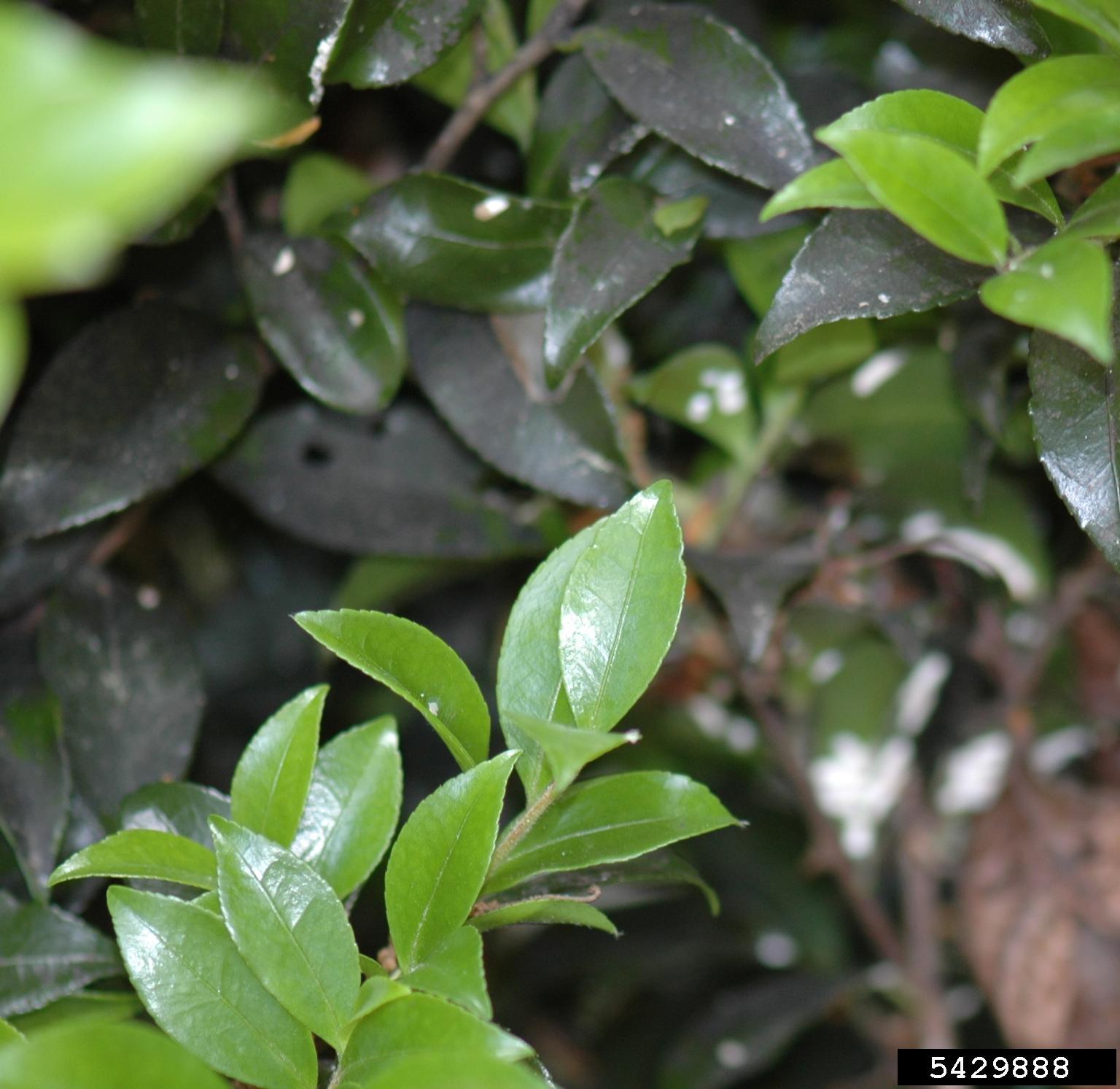Camellia Plant Problems: How To Fix Sooty Mold On Camellia


If you see black spots on your camellia plant leaves, you may have a fungal disease on your hands. Sooty mold is a common fungal issue that affects many types of plants. This fungus on camellia leaves smothers the stoma and diminishes the effectiveness of photosynthesis and transpiration. Unhealthy, dying leaves are the result. Learn about black sooty mold control and save the health and beauty of your camellia. Getting knowledge on how to fix sooty mold on camellia begins with learning the causes of this black leaf coating.
What Causes Camellia Sooty Mold?
A camellia with black leaves likely has an insect problem. It's not the insect's feeding that causes the phenomenon but its waste. Several types of fungus form on the surface of that waste and develop into sooty mold on camellias and many other ornamental plants. Unfortunately, the initial cause is often overlooked because the correlation between the insects and foliar damage is not connected. Who knew that insect secretions would be at the root of this unsightly foliar disease? A variety of insects, such as aphids, whiteflies and scale, feast on plant leaves and stems. As they feed, the expected occurs and the insect needs to void the waste. This substance is known as honeydew and attracts ants. Initially, it’s an almost clear, shiny, sticky substance coating the leaves. Several exploitive fungi, among them Atichia glomulerosa, use the honeydew as a food source. These fungal spores are spread through wind and water splash, as well as unsanitary plant maintenance practices.
Symptoms of Sooty Mold on Camellias
You might just notice the shiny leaves, tiny insects, and perhaps a colony of determined ants. As the fungus grows, however, it begins to darken into black powdery growth over the leaves and stems. It can be wiped off, but it hardens into a crust-like form that will flake off over time, often revealing healthy green tissue underneath. The fungus on camellia leaves usually doesn't cause severe harm to the plant, but it can interfere with photosynthesis and reduce plant vigor. In most cases, it is primarily an aesthetic problem. Camellia sooty mold can also take hold on fences and other items below plant leaves.
Black Sooty Mold Control
If possible, it is always best to attack a camellia with black leaves in a non-toxic fashion. You can simply wipe the leaves, but the initial problem of the insects must be addressed or the problem will return. Most horticultural soaps and oils will quell the insect population, such as neem oil. Once the insects are vanquished, make up a solution of a few drops of dish liquid mixed with water and spray on the leaves. Wait for a few minutes and then hose off the plant, removing most of the sooty mold. Further rain and time will remove the remainder of this unsightly fungus and the plant will recover its vitality.
Sign up for the Gardening Know How newsletter today and receive a free copy of our e-book "How to Grow Delicious Tomatoes".

Bonnie Grant is a professional landscaper with a Certification in Urban Gardening. She has been gardening and writing for 15 years. A former professional chef, she has a passion for edible landscaping.